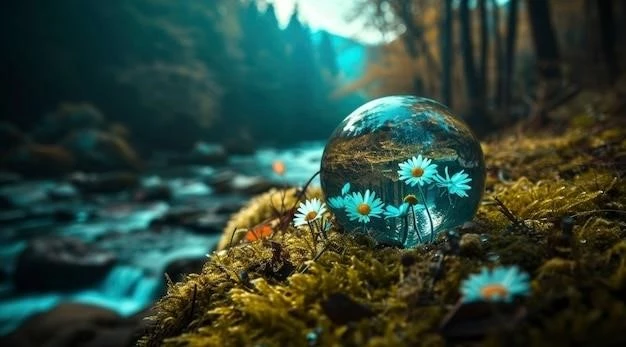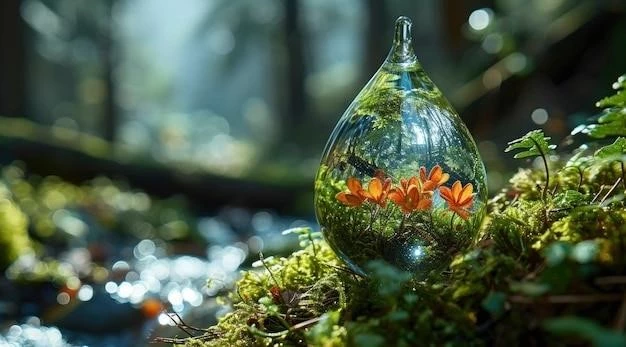As an avid traveler and nature enthusiast named Alex‚ I’ve always been captivated by the sheer beauty and magnificence of our planet’s natural wonders. From towering mountains and expansive canyons to shimmering glaciers and vibrant coral reefs‚ these awe-inspiring formations have a story to tell‚ a story etched in the annals of geological time. Recently‚ I embarked on a journey to delve deeper into the science behind these wonders‚ to understand the forces that have shaped them over millions of years.
The Grand Canyon: A Testament to Time and Erosion
My first stop was the iconic Grand Canyon‚ a vast chasm carved by the relentless power of the Colorado River. Standing at its rim‚ gazing down into the depths of geologic history‚ I was struck by the canyon’s immensity. It’s a humbling experience to comprehend that this natural wonder‚ stretching 277 miles (446 kilometers) long and reaching depths of over a mile (6‚093 feet or 1‚857 meters)‚ is the result of millions of years of erosion.
The Colorado Plateau’s uplift‚ beginning around 70 million years ago‚ gradually elevated the land‚ giving the Colorado River the impetus to carve its path. Over time‚ the river‚ aided by the forces of weathering and erosion‚ stripped away layer upon layer of rock‚ exposing a breathtaking cross-section of Earth’s history. The different bands of colorful rock strata visible in the canyon walls are like chapters in a geology textbook‚ each telling a tale of ancient environments and the forces that shaped them.

Niagara Falls: The Power of Water and Glacial Relics
Next‚ I ventured to Niagara Falls‚ a spectacle of raw power and beauty. The thunderous roar of billions of gallons of water cascading over the precipice is an experience that resonates deep within you. Here‚ the story is not just about erosion but also about the legacy of glaciers.
Around 12‚000 years ago‚ as the last ice age ended‚ retreating glaciers sculpted the landscape of North America‚ leaving behind the Great Lakes. Niagara Falls‚ situated on the Niagara River‚ which connects Lake Erie to Lake Ontario‚ owes its existence to this glacial history. The falls were formed by the rerouting of the Niagara River over a steep escarpment‚ a result of the differential erosion of harder Lockport dolostone overlying softer Rochester shale.
Witnessing the immense volume of water plummeting over the falls‚ I couldn’t help but contemplate the relentless force of nature. It’s a constant reminder of the power of water to shape our planet.
Pamukkale: A Chemical Masterpiece
My journey then took me to Pamukkale in Turkey‚ a surreal landscape often described as a “cotton castle.” Here‚ the wonder lies not in the carving power of water but in its ability to deposit minerals and create otherworldly formations. Pamukkale‚ meaning “cotton castle” in Turkish‚ is a series of dazzling white travertine terraces holding pools of mineral-rich thermal waters.
These terraces were formed over millennia by calcium-rich hot springs cascading down the hillside. As the hot water‚ saturated with calcium carbonate‚ cools‚ it precipitates the mineral‚ forming layers of travertine‚ a form of limestone. The result is a series of dazzling white terraces‚ holding pools of turquoise water‚ creating a landscape that seems almost magical.
The Northern Lights: A Celestial Ballet of Light
From the earthbound wonders‚ I turned my gaze skyward to the ethereal beauty of the Aurora Borealis‚ or Northern Lights. This celestial display of vibrant‚ dancing lights is a mesmerizing spectacle that has captivated humankind for centuries. Unlike the geological wonders I’d witnessed earlier‚ the Northern Lights are a result of solar activity interacting with Earth’s atmosphere.
The sun‚ in its active state‚ releases charged particles in a stream known as the solar wind. When these particles collide with atoms in Earth’s atmosphere‚ they excite the atoms‚ causing them to release light. This light manifests as the colorful auroral displays we see‚ with the colors varying depending on the type of gas molecules involved. Witnessing this celestial ballet of light‚ I was reminded of the interconnectedness of our universe and the awe-inspiring phenomena that result from these cosmic interactions.

Reflecting on the Wonders
My journey through these natural wonders filled me with a profound sense of awe and wonder. Understanding the science behind their formation only deepened my appreciation for the intricate processes that have shaped our planet over millions of years. From the erosive power of rivers to the glacial sculpting of landscapes‚ from the mineral-depositing properties of water to the celestial dance of light in our atmosphere‚ each wonder is a testament to the beauty and complexity of the natural world.
As I continue my explorations‚ I am reminded that these wonders are not merely breathtaking sights to behold; they are valuable ecosystems‚ delicate balances of natural processes that need our protection. It is our responsibility to ensure that future generations can marvel at these wonders and continue to unravel the mysteries they hold.










